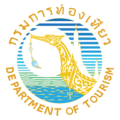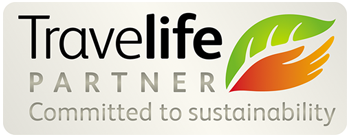Slow Travel in Phang Nga: Embrace Simplicity and Mindful Journeys

In a world that seems to move at an ever-accelerating pace, there’s a growing desire to travel differently—to move more slowly, experience more deeply, and connect more meaningfully with the places we visit. This philosophy of “slow travel” invites us to trade exhaustive itineraries and bucket-list checkboxes for immersive experiences that allow us to truly absorb the essence of a destination.
Phang Nga province in southern Thailand offers the perfect canvas for this mindful approach to travel. Beyond its famous limestone karsts and pristine beaches lies a rhythm of life that naturally encourages visitors to slow down, breathe deeply, and engage with local culture in authentic ways.
Let me guide you through the art of slow travel in Phang Nga, where simplicity becomes luxury and mindful moments create the most lasting memories.
Understanding Slow Travel: A Philosophy, Not an Itinerary
Before exploring specific experiences in Phang Nga, it helps to understand what slow travel truly means. More than simply spending longer in one place (though that’s certainly part of it), slow travel is about approaching your journey with a different mindset:
The Essence of Slow Travel
- Quality over quantity: Focusing on depth of experience rather than number of attractions visited
- Connection over consumption: Seeking meaningful interactions rather than collecting photos or souvenirs
- Process over destination: Finding joy in the journey itself, not just the endpoints
- Presence over planning: Allowing space for spontaneity and fully experiencing each moment
- Sustainability over convenience: Making choices that benefit local communities and environments, even when they require more time or effort
Slow travel doesn’t mean abandoning all planning or avoiding major attractions—rather, it’s about creating space in your journey for unexpected discoveries, deeper connections, and the authentic rhythms of a place.
Why Phang Nga Is Perfect for Slow Travel
While Thailand’s more famous destinations like Bangkok and Phuket pulse with energetic activity, Phang Nga maintains a gentler pace that naturally aligns with slow travel principles:
Natural Geography That Encourages Slowness
Phang Nga’s landscape of winding coastlines, hidden bays, and jungled mountains doesn’t lend itself to rushed exploration. Many of its most special places require time to reach—whether by long-tail boat through mangrove channels, hikes along forest trails, or meandering drives along coastal roads. This natural geography creates a built-in slowness that rewards those willing to take their time.
Strong Local Culture Less Affected by Mass Tourism
While tourism certainly exists in Phang Nga, many communities maintain traditional ways of life centered around fishing, farming, and craftsmanship. This creates opportunities for visitors to engage with authentic Thai culture rather than versions manufactured for tourist consumption—but accessing these experiences requires patience, respect, and a willingness to adapt to local timeframes.
Spiritual Traditions That Emphasize Mindfulness
Buddhist principles permeate daily life in Phang Nga, with temples and shrines serving as reminders to remain present and mindful. This spiritual foundation creates a cultural context where slowing down isn’t viewed as inefficiency but as wisdom—a perspective that visitors can absorb through their own thoughtful engagement with local customs and sacred spaces.
Slow Accommodations: Places That Invite Lingering
Where you stay profoundly shapes your travel experience. These accommodations in Phang Nga naturally encourage a slower, more mindful approach:
Small-Scale Eco Lodges
In the hills around Khao Sok and the forests near Kapong, several thoughtfully designed eco-lodges offer immersive natural experiences without sacrificing comfort. Properties like Our Jungle Camp and Anurak Community Lodge feature simple but comfortable rooms or bungalows set within natural surroundings, often with limited Wi-Fi and an emphasis on disconnecting from digital distractions.
These accommodations typically include spaces designed for lingering—hammocks strung between trees, reading nooks with forest views, and open-air communal areas where conversations with fellow travelers and local staff unfold naturally.
Family-Run Guesthouses
In towns like Takua Pa and Phang Nga Town, family-run guesthouses offer intimate accommodations where hosts often become your guides to local life. Places like Takua Pa Inn in the old town area welcome guests into restored heritage buildings where the slower rhythms of small-town Thai life become immediately apparent.
Unlike larger hotels with extensive amenities, these guesthouses encourage guests to integrate into local patterns—perhaps joining the family for morning market visits, learning to prepare a traditional dish, or simply sitting for lengthy conversations over tea in the common areas.
Longer-Stay Village Bungalows
Along the less-developed coastlines north of Khao Lak and around Thai Mueang, simple bungalow operations cater to travelers staying for weeks rather than days. These modest accommodations rarely appear on major booking sites and often offer significant discounts for longer stays, making them perfect bases for truly immersive experiences.
Properties like Namkhun Bungalow near Bang Sak Beach exemplify this approach, with basic but comfortable accommodations where guests become part of the extended community, learning the names of local shopkeepers and falling into natural daily routines that might include morning swims, afternoon fruit purchases from passing vendors, and sunset walks along beaches where you’ll recognize the same local families day after day.
Mindful Transportation: Moving Through the Landscape
How you move through Phang Nga significantly affects your experience of the province. These transportation approaches align with slow travel principles:
Bicycle Exploration
The flat coastal areas and gentle roads around Takua Pa and Thai Mueang are perfect for bicycle exploration, allowing you to cover reasonable distances while remaining fully connected to the surroundings. Many guesthouses offer bicycle rentals, or you can arrange longer-term rentals in larger towns.
A bicycle journey along the old town streets of Takua Pa reveals architectural details and community life you’d miss from a car, while coastal roads offer frequent opportunities to stop at roadside shrines, small beaches, or fruit stands whenever something catches your interest.
Long-Tail Boat Journeys
Rather than speedboats that rush between destinations, traditional long-tail boats move through Phang Nga’s waters at a pace that allows full appreciation of the journey. A day-long exploration of Phang Nga Bay’s less-visited islands or a meandering trip through the mangrove forests near Koh Panyee becomes as meaningful as the destinations themselves.
Arrange boats through local boat captains at smaller piers rather than tour agencies for more flexibility in pacing and destinations. Though communication might require more effort, the reward is an experience tailored to slow travel principles rather than efficient tourism.
Walking Without Destinations
Perhaps the simplest yet most profound way to practice slow travel is through purposeful walking without specific destinations. The communities around Bang Pat fishing village, the old town streets of Takua Pa, and the coastal paths near Khao Lak all reward aimless wandering.
This practice requires releasing the need to “see everything” and instead allows for serendipitous discoveries—a grandmother teaching grandchildren to weave palm fronds, an impromptu soccer game where you might be invited to join, or a small shrine tucked away behind larger buildings.
Immersive Experiences: Depth Over Breadth
Rather than rushing between attractions, slow travel in Phang Nga might include these deeper, more immersive experiences:
Multi-Day Homestays
Several communities in Phang Nga offer homestay experiences where visitors live with local families for multiple days, participating in daily activities and gaining insight into authentic Thai life. The fishing communities around Baan Sam Chong Nuea welcome visitors into simple family homes where you’ll help harvest shellfish, prepare meals using traditional methods, and learn about mangrove forest conservation efforts that sustain their way of life.
These experiences rarely follow strict schedules and instead invite you to adapt to the natural rhythms of the household and community. You might find yourself waking before dawn to accompany family members as they check fishing nets, spending languid afternoons helping prepare dinner ingredients, or joining evening gatherings where neighbors share local stories and music.
Extended Learning Experiences
Rather than brief cultural demonstrations, consider multi-day learning experiences that allow you to develop a genuine skill. In Takua Pa, week-long traditional batik workshops pair visitors with master artisans who teach the entire process from wax application to dyeing techniques. Near Khao Lak, extended Thai cooking courses go beyond tourist-friendly dishes to explore regional specialties, including ingredients gathered from local markets and gardens.
These experiences transform you from observer to participant and often lead to meaningful relationships with teachers and fellow students that transcend typical tourist-local dynamics.
Volunteer Engagements
Thoughtfully chosen volunteer opportunities can provide meaningful ways to engage with local communities, though careful research is essential to ensure your contribution is genuinely helpful rather than disruptive. Organizations like Andaman Discoveries connect visitors with community-led initiatives ranging from mangrove reforestation to English language practice sessions at local schools.
The key to mindful volunteering is commitment to regular participation over time rather than one-off visits. Consider dedicating at least a week to a specific project, allowing relationships to develop naturally and your understanding of local contexts to deepen.
Mindful Eating: Food as a Portal to Culture
Food offers one of the most accessible paths into a culture, and Phang Nga’s distinctive culinary traditions reward those willing to explore beyond tourist menus:
Morning Market Rituals
Start your days with visits to local morning markets, where the freshest ingredients change with seasons and availability. Rather than rushing through, spend time observing how local people select ingredients, what conversations unfold between vendors and regular customers, and which foods appear most prominently.
The morning market in Phang Nga Town operates daily from around 5:30 AM until mid-morning, offering a glimpse into authentic southern Thai food culture. Instead of photographing everything, consider buying small quantities of unfamiliar items and asking vendors through gestures or simple phrases how to enjoy them.
Single-Dish Specialists
Rather than restaurants with extensive menus catering to tourist preferences, seek out the small, specialized food stalls where families have often prepared the same dish for generations. Near the old pier in Takua Pa, a third-generation family serves only kuay tiaw reua (boat noodles) using a recipe unchanged for decades. In the Muslim communities near Bang Pat, specific households are known for their khao yam (rice salad) prepared with traditional fermented fish sauce and local herbs.
These specialist vendors represent deep culinary knowledge focused on perfecting specific recipes rather than offering variety. Visiting the same stall multiple times allows you to recognize the subtle daily variations that reflect available ingredients and the cook’s continuous relationship with the dish.
Slow Meals and Food Relationships
Beyond what you eat, consider how you eat. Rather than quickly consuming meals before moving to the next activity, allow time for the full experience of dining. Small roadside restaurants throughout Phang Nga often serve food in multiple stages, with accompaniments appearing throughout the meal as they’re prepared fresh.
Returning to the same establishments regularly builds relationships that enhance your dining experience. After a few visits, proprietors might introduce special off-menu items, explain particular cooking techniques, or invite you to witness preparation processes typically hidden from tourists.
Embracing Natural Rhythms: Time and Season
Truly slow travel means adapting to natural cycles rather than imposing our schedules on a place:
Dawn and Dusk Reverence
In tropical Phang Nga, early mornings and evenings offer the most pleasant temperatures and extraordinary light conditions. Rather than filling these hours with structured activities, create space for simply being present in beautiful settings.
The beaches north of Khao Lak become magical spaces at dawn, often with only a few local fishermen or morning exercisers sharing the vast stretches of sand. Similarly, the limestone karsts of Phang Nga Bay transform during the “golden hour” before sunset, their jagged profiles softening in the warm light.
Weather Acceptance
During Phang Nga’s rainy season (approximately May through October), sudden showers interrupt outdoor activities regularly. Rather than fighting this reality with frustration or tight schedules, embrace the natural rhythm by building flexibility into your days.
Keep mornings open for outdoor exploration when rain is less common, carry simple rain protection, and identify pleasant indoor spaces—small coffee shops, covered market areas, or temple pavilions—where you can peacefully wait out heavier downpours while observing local life continuing around you.
Seasonal Festivals and Observations
Plan longer stays to coincide with significant seasonal events that reveal deeper aspects of local culture. The Vegetarian Festival in Takua Pa (usually in September or October following the lunar calendar) transforms the town with processions, food offerings, and spiritual ceremonies rarely witnessed by short-term visitors.
Rather than viewing these events as photo opportunities, take time to understand their significance through conversations with local participants, gradually learning appropriate ways to respectfully observe or even participate when welcomed.
Digital Mindfulness: Connecting by Disconnecting
While total digital detox isn’t necessary for slow travel, mindful management of technology enhances your ability to fully experience Phang Nga:
Designated Connection Times
Rather than constant connectivity, consider establishing specific times for checking messages or posting updates. Perhaps 30 minutes each evening is sufficient to maintain necessary connections while preserving the majority of your day for present-moment experiences.
Many accommodations throughout Phang Nga—particularly in more remote areas near Khao Sok or smaller coastal communities—have limited Wi-Fi available only in common areas. Embrace this constraint as a feature rather than inconvenience.
Photography With Intention
Cameras can enhance mindful travel when used thoughtfully but can also create barriers between you and direct experience. Consider practicing “pre-visualization” by fully absorbing a scene or moment before deciding whether to photograph it. When you do take pictures, be intentional about composition and purpose rather than documenting everything reflexively.
The limestone formations of Phang Nga Bay have been photographed millions of times, but your unique perspective might emerge from unusual angles, changing light conditions, or focusing on details rather than panoramic views. Allow yourself extended time in beautiful locations, photographing thoughtfully rather than rushing to capture everything at once.
Analog Documentation
Consider supplementing or replacing digital documentation with more reflective analog practices. A simple journal where you record sensory observations, meaningful conversations, or personal reflections often creates more lasting memories than collections of digital images.
Sketching, even for those without artistic training, encourages deeper observation of details you might otherwise miss. The intricate patterns of a temple roof, the silhouette of fishing boats against the sunset, or the arrangement of food at a local market can become subjects for simple drawings that enhance your memory of these experiences.
Practical Guidance for Slow Travel in Phang Nga
To help you implement these principles, here are some practical suggestions for your mindful journey through Phang Nga:
Suggested Areas for Extended Stays
Takua Pa Old Town: This historic area with Sino-Portuguese architecture offers a glimpse into southern Thailand’s past trading importance. The manageable size, walkable streets, and strong community atmosphere make it ideal for slow immersion. Consider staying at least 4-5 days to establish relationships with local shopkeepers and food vendors.
Bang Pat Fishing Village: This small coastal community built partly on stilts offers insight into traditional fishing practices largely unchanged for generations. The limited accommodation options are basic but allow deep immersion into rhythms dictated by tides and weather. A minimum stay of 3-4 days allows you to observe how fishing activities change with conditions.
Thai Mueang: This less-developed coastal area between busier destinations offers quiet beaches, small-scale agriculture, and national park access. The mix of Muslim and Buddhist communities creates a culturally rich environment perfect for gentle bicycle exploration. Consider at least a week-long stay to establish comfortable daily routines.
Sample Slow Travel Day
Rather than detailed itineraries, consider this framework for a day of slow travel in Phang Nga:
Early Morning (5:30-8:00 AM): Rise with the sun for a quiet walk or gentle swim before the day’s heat. Observe local residents beginning their day—monks collecting alms, vendors setting up market stalls, fishermen returning with night catches.
Mid-Morning (8:00-11:00 AM): Visit a local market for fresh fruit breakfast, then perhaps attend a cooking session or craft demonstration where timing unfolds naturally rather than by strict schedule.
Midday (11:00 AM-2:00 PM): Embrace the tropical custom of midday rest during the hottest hours. Read, journal, or simply observe from a shaded spot—perhaps a temple courtyard or seaside pavilion where local people similarly pause their activities.
Afternoon (2:00-6:00 PM): Engage in gentle exploration—perhaps cycling to a nearby village, joining a leisurely long-tail boat trip, or walking forest trails in the softer afternoon light.
Evening (6:00 PM onward): Dine unhurriedly at a local establishment, perhaps followed by a night market visit where the focus is on observation and connection rather than purchasing. End with simple relaxation at your accommodation, perhaps sharing conversations with hosts or fellow travelers.
Practical Tips for Deeper Connections
- Learn basic Thai greetings and thank-you phrases—even limited language efforts are appreciated and open doors to warmer interactions
- Carry a physical map and ask for recommendations through gesture and simple words rather than relying solely on digital guidance
- Establish relationships with tuk-tuk or motorbike taxi drivers by using the same person throughout your stay rather than hailing different drivers each time
- Bring small gifts from your home country to share with hosts or new local friends—nothing expensive, but something representing your culture
- Dress respectfully according to local standards, particularly when visiting temples or traditional communities
The Lasting Impact of Slow Travel
Beyond creating more meaningful vacation experiences, slow travel in Phang Nga offers transformative potential that extends well beyond your journey:
Environmental Benefits
By staying longer in fewer places, using gentler transportation methods, and supporting businesses with sustainable practices, slow travelers reduce their environmental footprint significantly. This approach honors Phang Nga’s extraordinary natural beauty while helping preserve it for future generations.
Community Support
Slow travel naturally directs more economic benefits to local communities. Extended stays mean purchasing more meals from local vendors, developing relationships that lead to hiring local guides directly rather than through agencies, and discovering small businesses beyond main tourist areas.
Personal Transformation
Perhaps most significantly, the mindful approach of slow travel can catalyze lasting personal change. Many travelers report that after experiencing the unhurried rhythms of places like Phang Nga, they return home with new perspectives on time, consumption, and what constitutes meaningful experience—often making permanent life adjustments inspired by their journey.
The Paradox of Slow Travel
There’s a beautiful paradox at the heart of slow travel: by doing less, you experience more. By covering less ground geographically, you travel more deeply culturally. By planning fewer activities, you often encounter more meaningful opportunities.
Phang Nga’s natural beauty, cultural richness, and gentle pace create the perfect environment for discovering this paradox firsthand. In a province where limestone karsts have stood unchanged for millennia and fishing communities maintain traditions passed through countless generations, your own brief presence gains meaning not through hurried consumption of experiences but through mindful participation in the continuing flow of life.
When you eventually depart, you’ll carry not just photographs and souvenirs but a deeper understanding of place that becomes part of who you are—the most valuable travel souvenir of all.
Have you experienced slow travel in Thailand or elsewhere? Share your stories and insights in the comments below!






